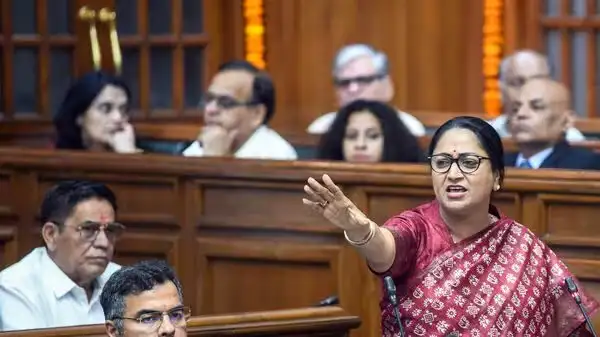Delhi Government Cuts MLA Development Fund to ₹5 Crore: Impact on Local Projects and Public Response
In a move that has sparked debate across Delhi, the government has slashed the MLA Local Area Development (LAD) fund from ₹15 crore to ₹5 crore per year. The announcement comes just months after the AAP-led administration raised the fund from ₹10 crore to ₹15 crore in October 2023, ahead of the upcoming assembly elections.

This abrupt policy shift has triggered criticism and concern about how it might affect local-level development across the city’s 70 constituencies.
What Is the MLA LAD Fund?
The MLA Local Area Development fund gives elected legislators the financial means to support essential development projects in their constituencies. MLAs use this fund to tackle local issues such as road repairs, drainage upgrades, park maintenance, street lighting, and construction of community spaces.
With the latest revision, each MLA now receives only ₹5 crore annually—just one-third of what was promised last year. This change significantly limits the resources available for neighborhood-level improvements.
Why Did the Fund Get Cut?
The Delhi government reportedly made the decision due to rising financial pressures and a need to prioritize funding for broader public services like healthcare and education. However, many have questioned why the administration reversed its earlier stance, especially after justifying the previous hike in allocation.
In October 2023, government officials claimed that ₹10 crore was insufficient for meaningful development. By cutting the fund to ₹5 crore now, they’ve left many citizens and lawmakers confused about the sudden policy turnaround.
Opposition Reactions and Political Fallout
Opposition leaders, particularly from the BJP and Congress, have strongly condemned the decision. They accused the AAP government of using the earlier fund increase as an election strategy and now going back on its word.
“They raised it just to gain votes and have now abandoned the promise,” a BJP spokesperson stated.
Several AAP MLAs have expressed frustration over the move, although they haven’t done so publicly. These legislators now face an uphill battle in explaining the reduced funding to voters who expected new projects or faster completion of ongoing ones.
Local Development Takes a Hit
This budget cut will likely slow down civic improvements, especially in underdeveloped or densely populated areas that rely heavily on MLA funds. For many communities, this fund acts as the primary source for addressing immediate local concerns.
In East Delhi, a resident welfare association had planned park upgrades and better drainage. “We were counting on MLA funds for these. Now, we may have to drop or delay these projects,” said the RWA president.
Without sufficient funds, legislators will need to prioritize certain neighborhoods over others, potentially creating discontent among residents.
Transparency and Oversight
In recent years, the use of MLA funds has faced scrutiny. Some watchdog groups and media reports have highlighted issues like delayed execution, lack of community consultation, or underutilized budgets. Despite this, experts argue that better management—not fund cuts—is the right solution.
“If the concern is misuse, improve the checks and monitoring systems. Don’t take away resources entirely,” said an urban development analyst.
The Delhi government has launched digital portals to track fund usage and promised more transparent processes, but the reduction may weaken these efforts by shrinking the pool of funds needing oversight.
Budget Priorities vs. Constituency Needs
The administration appears to be shifting its focus toward large-scale public services, which is understandable given Delhi’s population and complex needs. But sidelining local development could alienate voters who value visible progress in their immediate surroundings.
Grassroots improvements often define an MLA’s reputation. Fewer resources will make it harder for elected representatives to meet community expectations, especially with elections drawing closer.
Public Reactions
Delhiites are divided over the issue. Some residents sympathize with the government’s budgeting challenges. Others feel disappointed and misled.
“In October they told us ₹15 crore was necessary. Now suddenly ₹5 crore is enough? That’s hard to accept,” said a schoolteacher in West Delhi.
In areas where infrastructure remains poor, this decision has added to the frustration. Citizens fear more delays in getting basic amenities like street lighting or water pipelines.
Possible Alternatives
Instead of slashing funds, the government could explore more collaborative funding models. By working closely with municipal corporations, MLAs could find alternate ways to finance key projects. Some experts have also recommended that Delhi implement stronger evaluation methods to ensure existing funds create real impact.
Enhancing transparency through real-time dashboards and public feedback systems can build trust and reduce waste—without slashing development budgets.
Final Thoughts
The Delhi government’s decision to reduce the MLA LAD fund from ₹15 crore to ₹5 crore reflects changing priorities—but it risks compromising local development. While fiscal discipline is important, cutting off support for neighborhood-level projects can backfire both socially and politically.
As the city inches closer to another election cycle, the reduced fund allocation will likely remain a contentious issue. Lawmakers, residents, and civic planners must now find new ways to ensure Delhi’s local infrastructure needs don’t go unmet.






